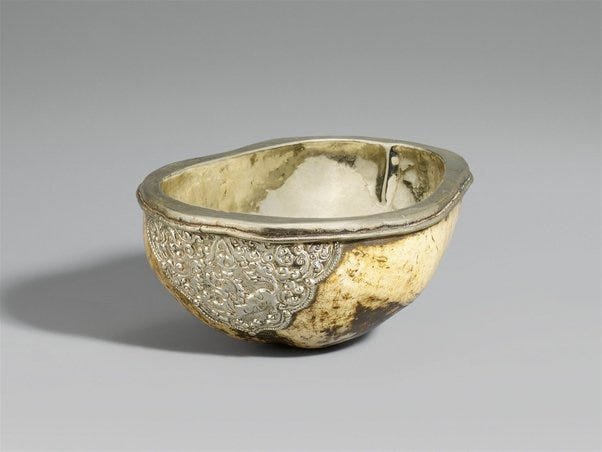Going beyond life and death
Last time, in creative ways to honour the dead, we were looking at how our relationships can continue after a person has died. A lot of the comments and emails I received afterwards picked up on one little paragraph at the end where I dropped in my notion that perhaps we will be reunited with the dead when we die:
Being a ‘creative Buddhist’ means I’m happy importing beliefs from other faiths into my own. One of these beliefs is the idea of being reunited with my ancestors when I die. That they are somehow waiting for me. It’s such a consolation. Given that within Buddhism, both ‘time’ and ‘space’ are constructs of the mind, I don’t think this belief seriously contradicts my Buddhist views. Our views create our world and this is a view I’ve recently decided I’d like to live with.
One person shared: When my grandmother was near death, I asked her if she was frightened and she said “oh no dear, I’ll be seeing your Grandpa!” At the time I felt a bit scathing of that belief but I can see from what you suggest that outside of time and space anything is possible, and maybe just depends on our sense of connection.
Another offered this: Yes, why shouldn’t we choose to be with them? Sometimes I choose to be with my parents right now. I can still imagine their physical reality and close my eyes and be with them for a little while, and this is much more possible - and comforting - now, than it was immediately after their deaths when all was loss.
Then, in an email I received a question, a question I thought I would try to answer this week:
I periodically seek psychic guidance and I’m sure that it is my parents who come through to me when I seek their guidance through a medium. Yet I am confused as to how this can be, given the Buddhist concept of rebirth? Any views much appreciated
What follows are a few, non-linear, reflections on the meaning of death, and therefore, the meaning of life. There’s no way of doing the subject justice in a brief letter to you, but I hope these musings will act as a catalyst for your own reflections.
An early experience of going beyond life and death
I had an early insight into the nature of life and death. In my 20s I was on a solitary retreat and in one meditation, out of nowhere, I had a powerful sense of my granddad. So strong that I wondered if maybe he had died. It was in the days before mobile phones, so there was no way of knowing. This fact of my ‘not knowing if someone was dead or alive’ led to a stream of realisations.
Granddad is alive, because he’s alive for me here now, in the same way he’s always been.
Granddad is dead, because he will die in time, that’s certain.
Right now, it makes no difference to me whether he is alive or dead.
My relationship with him doesn’t depend on him being alive.
My grief doesn’t depend on him being dead.
I’m not a big crier, but I remember sobbing. My heart was so full of love and grief at the same time. Like all insights, the realisation is now somehow integrated, losing its intensity and becoming ‘the new normal’.
So how do we exist for one another when we are alive?
Sometimes someone exists as a fleshy being, same time, same space, perhaps giving us a big hug, or possibly doing something that annoys us.
At other times, they exist as a thought. So many people pop into my head in the course of a day. You might be one of them! I think we’d be shocked to know how often we are thought of, how often our name comes up in conversations. I sometimes imagine us being able to see that, like a big net of lights, lighting up when you were present for someone else.
Then they exist in dreams. That really is a magic, beyond time and space. When I meet people in my dreams, it feels like a real meeting. I guess the magic is in part that we can’t choose that meeting; it is a gift.
How do we exist beyond time and space?
We do most of our thinking about death within a conventional framework of time and space. But what if time and space don’t exist in the way we understand them? Time and space are dimensions, and arise from our desire to measurethings.
We measure things in time, creating beginnings and endings, past and future. We even have this odd notion of ‘the present moment’, as if one could actually find such a thing. Then we measure things in space, creating borders, edges and locations.
We play our part in creating time and space. Within time and space, we create all these categories and take hold of them in a literal way.
We believe there literally is a beginning or end to a feeling, or a literal place around our wrist where our ‘arm’ becomes our ‘hand’. In doing so, we create a lot of logical problems for ourselves, then spend our precious time trying to work out the problems we’ve created!
Did we exist beforethis lifetime? Wheredo we go afterwe die? What happens whenwe die? Do we come back here? Whereare the ancestors now?
Problems of time and space.
The question my friend emailed me, paraphrased here as - how can it be that I feel my parents are there guiding me from the afterlife, if, in fact, they are already reborn as the Buddhist tradition holds? - is a problem of time and space.
But what if we go beyond time and space? If we let go. Soften our literal mind. Open to something more mysterious, ungraspable?
A skull-cup full of blood, a vase containing the nectar of immortality
Let’s shift the conversation from concepts to images. Images, like poetry, resist being taken literally.
Padmasambhava holds a skull cup in his left hand, representing the death of the ego. It’s filled with blood, representing life itself, love, bliss. He’s going to drink the blood. Floating on top, within the cup, is a vase containing the nectar of immortality.
In Buddhism, we always find the truth of things in the ‘middle way’. To find the middle way, we have to get used to holding contradictions, holding them with no hope of resolution. Padmasambhava holds the contradiction of life in death.
The nectar of immortality doesn’t mean that it’s possible to live for a very, very long time. Immortality means to be beyond life and death. There is, in us, something that has never been born and will never die.
Sitting with those images now, I see them pointing to the same realisation I had an inkling of all those years ago, that my granddad was both alive and dead, because he was then, and is now, beyond life and death.
‘Deathless’ (amata) is an epithet of nirvana. We are all on the path to deathlessness.




